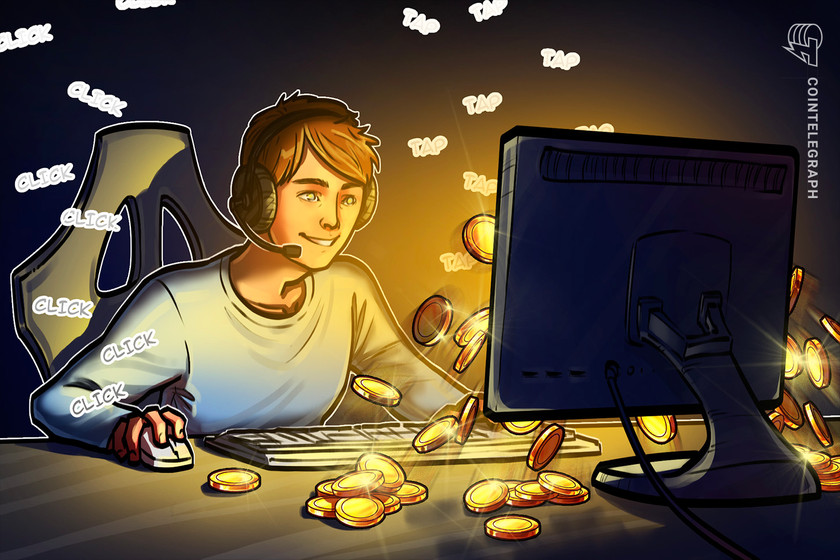
Developers have been focusing more on tokens than on making fun games. As a result, GameFi has been dying.
Play-to-earn gaming enabled by blockchain technology has grown exponentially over the few years.
Gamers have embraced the opportunity to collect cryptocurrencies or nonfungible tokens (NFTs) that have been produced in blockchain-based games.
Through the advent of this new technology, players have been able to generate income by selling in-game NFTs or earning cryptocurrency rewards, both of which can be exchanged for fiat cash.
Because of this, according to data from Absolute Reports, the estimated value of the GameFi industry will grow to $2.8 billion by 2028, with a compound annual growth rate of 20.4% over the same period. But such predictions may well prove to be unfounded.
Given the rate of exponential growth over recent years, one might think that there was absolutely no reason to believe the trend would not continue well into 2023 and beyond. Right? Wrong.
As we have seen with the ignominious case of former crypto king Sam Bankman-Fried and the implosion of FTX, a castle built on a flimsy foundation of sand can be easily washed away when the tide comes in and goes back out again.
Related: GameFi developers could be facing big fines and hard time
Or, as legendary investor Warren Buffett liked to put it: “Only when the tide goes out do you discover who’s been swimming naked.”
We may be about to learn who these people are. The fact of the matter is the play-to-earn gaming industry is not built on firm foundations. The foundations are fragile and flimsy, and this could well spell trouble in 2023. The whole edifice looks set to come crashing down.
The structure of the current GameFi market is token-centric and this can create a number of issues. Project owners issue their tokens which are listed on exchanges first before they announce that they are going to build games. Games are a utility of tokens they issue. So tokens come first, and contents later. This is why the quality and design of games in the blockchain space are so underrated.

An environment has been created in which the players are not all that interested in games themselves, which is a strange state of affairs for a gaming industry to find itself in. More and more of the players are, in reality, investors who want returns on investment.
The current structure creates the wrong kind of incentives and this is one of the reasons why the system is not working as it should. I would argue that DeFi Kingdoms, which is one of the better-known play-to-earn blockchain games out there, has been screwing with its tokenomics relentlessly by creating perverse incentives.
By now, generally speaking, the token market is in a downtrend and the speculative trading market is dead. An industry can survive for a certain amount of time on promise, expectation and unjustified hype. But, it can only do so for so long. Eventually, people begin to notice that they haven’t received what they have been promised. Patience starts to wear thin. They get angry, they get frustrated and they begin to withdraw. This begins as a trickle of the savviest players, but that can soon become a flood.
Related: Anonymous crypto developers belong in prison — and will be there soon
Those who have planned to secure funds by listing their tokens will have to reassess. Many will be forced to close their projects due to insufficient funds. The situation is becoming so acute that even hitherto bullish crypto venture capitalists (VCs) are also pausing new investments.
So, who is going to survive this investment drought? It looks unlikely that GameFi will. However, other blockchain gamings might do so.
One example is the Ethereum-powered, NFT-based fantasy football league operator Sorare has become a Web3 unicorn. While many of its competitors struggle, Sorare keeps on increasing its users and revenue during the darkest period. Their daily auction volume is impressive, at around 300-400 Ether (ETH), and the number of users keeps increasing.
Though its back end relies on blockchain, users do not perceive it as a GameFi project. They do not provide their native tokens, but they do provide their content first on Ethereum, which very much looks like the way to go for the industry at large.
So GameFi may well die in 2023, but that does not mean that all is lost. Death is a necessary part of evolution. From it, new life may already be beginning to emerge.
This article is for general information purposes and is not intended to be and should not be taken as legal or investment advice. The views, thoughts, and opinions expressed here are the author’s alone and do not necessarily reflect or represent the views and opinions of Cointelegraph.









